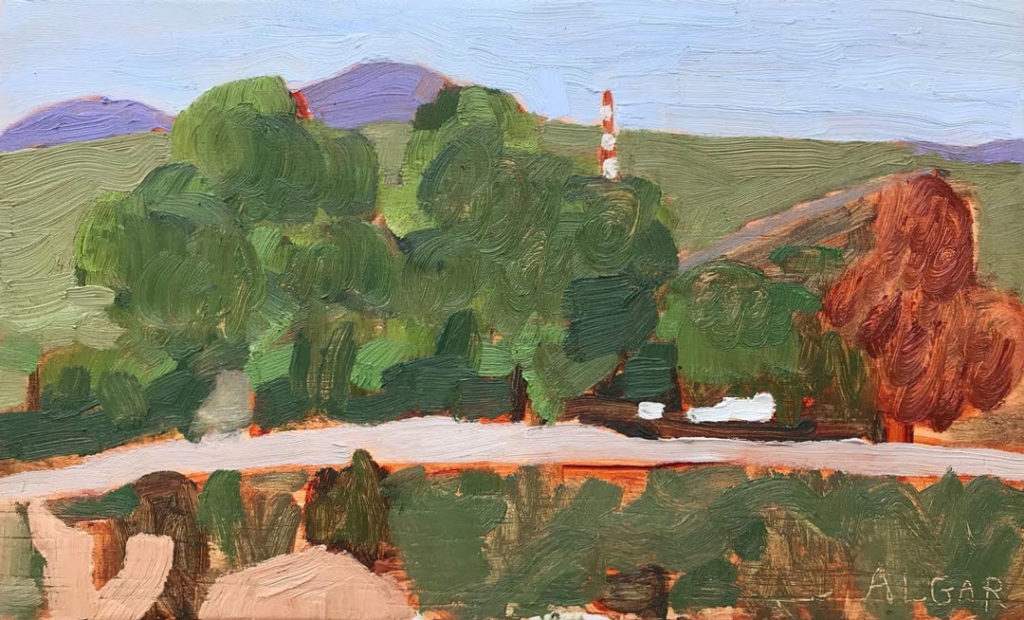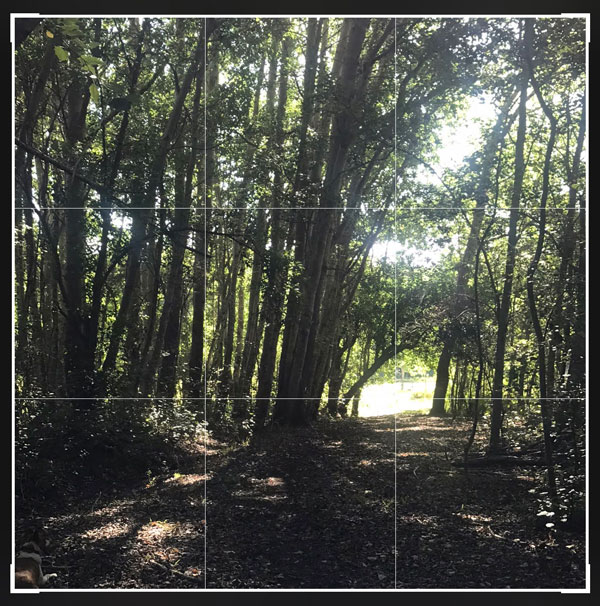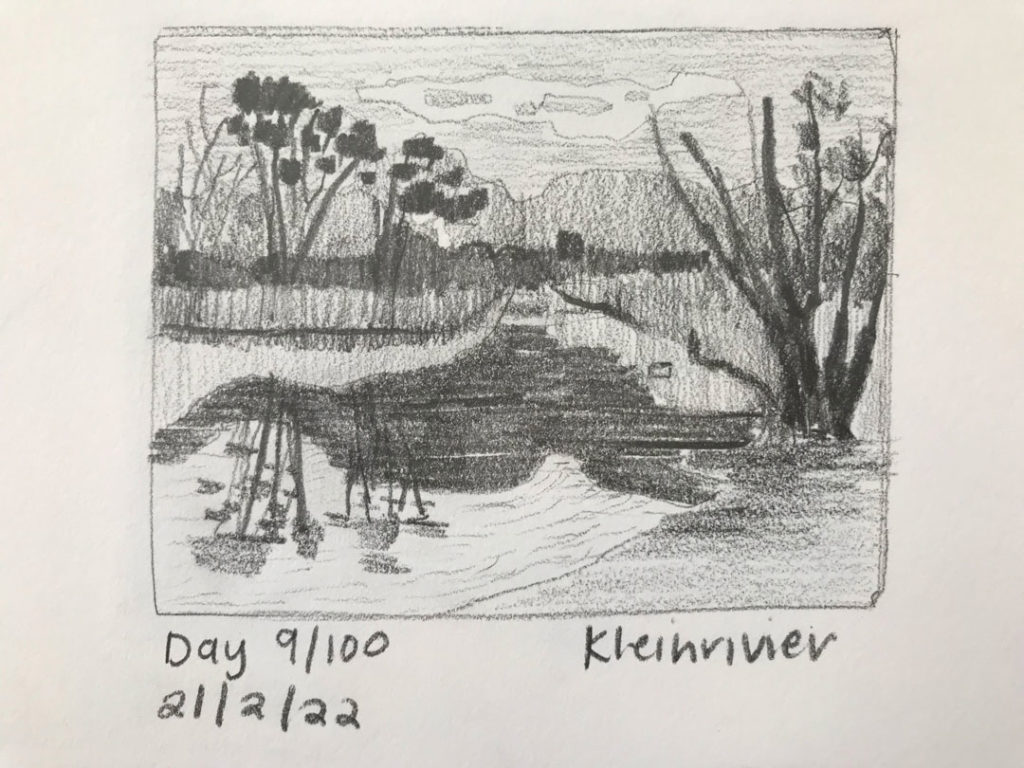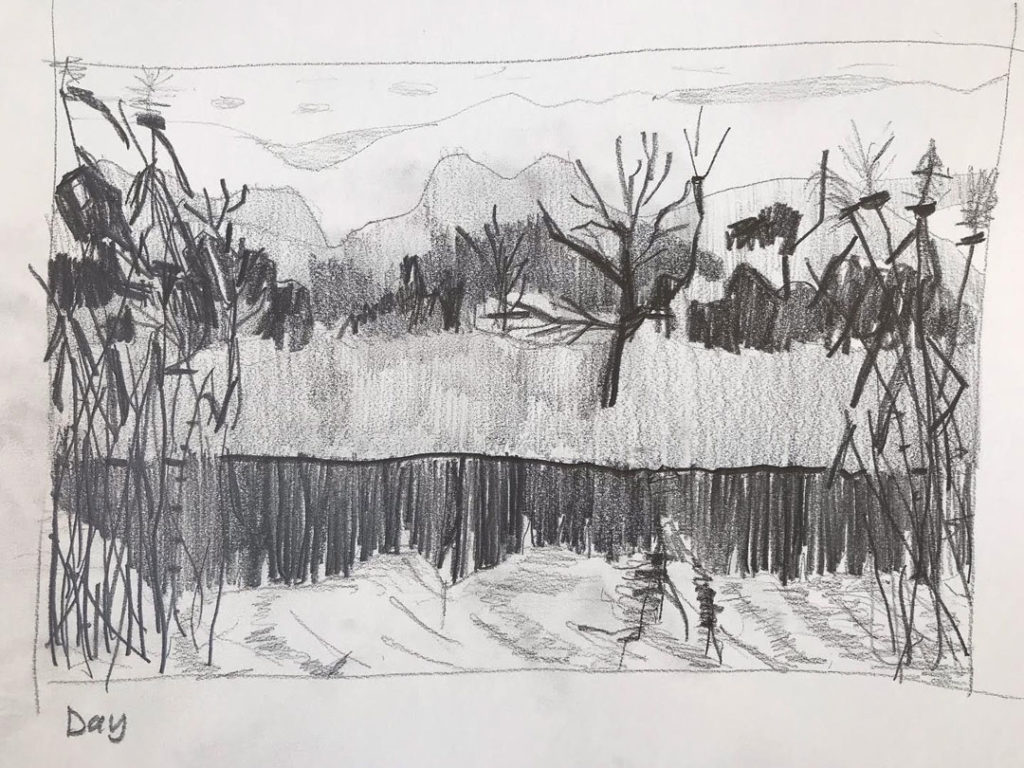A few weeks ago on a very windy day when my friend Cathy and I went up to Stanford Hills to paint. It was a strong Southeaster and not a sheltered spot in sight (except indoors, but we didn’t want to be indoors).
We decided to go down to Blue Moon Farm where Cathy lives, and find a sheltered spot where we could paint something.
There were no “obvious” great views from any of the sheltered spots, which included the potting shed and the bedroom stoep overlooking the Kleinrivier valley. That second option might sound obvious, but because of the wind we needed to be tucked in behind the succulents that protect the pond from the wind, and so the view was either of the inside of the pond/vegetation area (very close up) or a sort of sideways view of the edge of where the floodplain meets the higher ground.
I chose an interesting view with a white building as focal point and some other interest including a red/brown tree and a cell phone tower. There are the distant mountains to give the composition some depth. I’m very satisfied with this composition.

Here are some things to bear in mind if you don’t have an obvious view/composition to paint
Firstly, think deliberately about not just doing the most obvious “view” that’s available. What about zooming in on one or two interesting shadows or highlights and building a composition around them?
- Look for: interesting light patterns
- Look for: big shapes that make a pleasing design
A second option would be to look for an obvious focal point in the landscape and build the composition around it.
If you’re still not very sure about a composition, try out a few ideas in small notan thumbnails in your sketchbook or on a sheet of paper to see whether there are any designs that please you.
The Rule of Thirds:
Don’t put your focal point smack in the middle of your painting!
Draw a real or imaginary grid over your surface/image. You can do this with your phone’s crop grid, to find where the lines cross. Place your focal point on one of these four points.

The process:
You have your composition decided on and it’s time to map it out in three to five values in your sketchbook. Take 10 – 15 minutes to plan it out and shade it in.
For a simple three-value pencil sketch, I recommend a 4B pencil, shaved with an NT cutter with a diagonal blunt edge. This will enable you to draw thin and thick lines.
Begin by mapping out where the large shapes are in lines. Then put in medium-sized shapes. Finish by shading in dark (pressing hard) and medium (pressing lightly) with the paper being the lightest of the three values.


Decide on a strategy/process for your painting
You now have a value study mapping out where to place the different values on your surface. This simplifies things enormously when it comes to starting painting and is the essential planning step of my process before I start working on a board or canvas.
Once I’ve done the preparatory work in my sketchbook, I follow the same basic steps every time I create a painting. Here is a summary of them.
Step 1: Tone the canvas
Step 2: Sketch the composition onto the canvas
Step 3: Block in the big shapes
Step 4: Second pass with medium shapes
Step 5: Final details